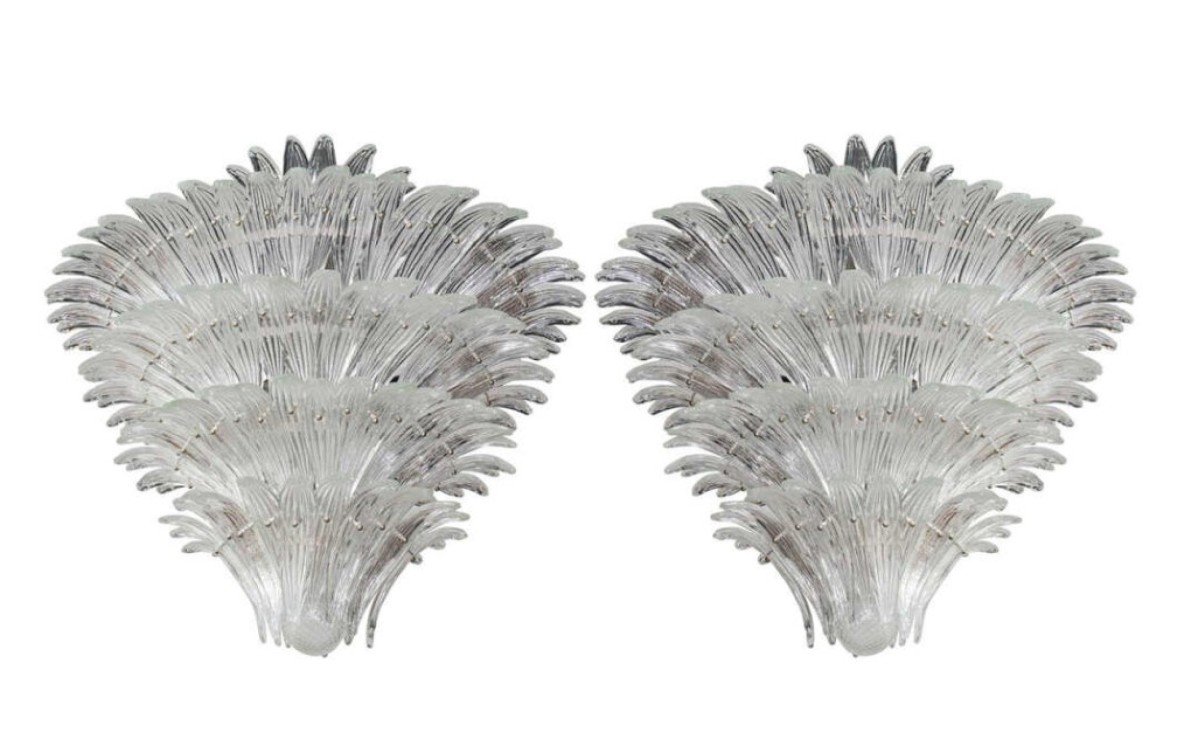X
{{ modalTitle }}
PLEASE FILL IN THE REQUIRED FIELDS.X
X
{{ modalTitle }}
Choose one of the options below.X
ITEM SUCCESSFULLY
ADDED TO PROJECT
French Art Deco Frosted Glass Bowl Chandeliers
 Art Deco
Art Deco French
French Lighting
Lighting Chandelier
Chandelier
Newel Warehouse
32-00 Skillman Ave
Long Island City NY - 11101
 (212) 758-1970
(212) 758-1970
French Art Deco Frosted Glass Bowl Chandeliers

Newel Warehouse
32-00 Skillman Ave
Long Island City NY - 11101
 (212) 758-1970
(212) 758-1970
 Lighting
Lighting Chandelier
ChandelierArt Deco
The Art Deco movement, a prominent force within the industrial design of the 1920's & 1930's was born shortly after the turn of the 20th century, when the decorative artist community in France, represented by the Societe Des Artistes, gained the same rights of authorship enjoyed by painters and sculptors. The style of Art Deco in architecture, furniture, fashion and art is known for vivid colors (inspired by early 20th century ballet set design) and geometric forms (inspired by Cubism). Art Deco was the style of luxury during its time, as it featured expensive materials and expert craftsmanship. and represented modernization. Eventually, Art Deco split into two rival schools of design, one following its tradition of luxury, and the other, eventually referred to as Streamline Moderne, embraced industrialization and mass production. A revival of interest in early and mid-20th century design has given new life, purpose and relevance of Art Deco design in the modern home.
Finial
An ornamental, terminating piece that extends vertically from the apex of a design. In architecture, they are found at the tips of gables or spires, and in furniture, as top ornaments on cabinet corners, posts, or supports. Finial also refers to the decorative metal piece used to affix lampshades to table and floor lamps. They often take the shape of a ball, flame, flower, acorn, pineapple, or vase.
Art Deco
The Art Deco movement, a prominent force within the industrial design of the 1920's & 1930's was born shortly after the turn of the 20th century, when the decorative artist community in France, represented by the Societe Des Artistes, gained the same rights of authorship enjoyed by painters and sculptors. The style of Art Deco in architecture, furniture, fashion and art is known for vivid colors (inspired by early 20th century ballet set design) and geometric forms (inspired by Cubism). Art Deco was the style of luxury during its time, as it featured expensive materials and expert craftsmanship. and represented modernization. Eventually, Art Deco split into two rival schools of design, one following its tradition of luxury, and the other, eventually referred to as Streamline Moderne, embraced industrialization and mass production. A revival of interest in early and mid-20th century design has given new life, purpose and relevance of Art Deco design in the modern home.
Finial
An ornamental, terminating piece that extends vertically from the apex of a design. In architecture, they are found at the tips of gables or spires, and in furniture, as top ornaments on cabinet corners, posts, or supports. Finial also refers to the decorative metal piece used to affix lampshades to table and floor lamps. They often take the shape of a ball, flame, flower, acorn, pineapple, or vase.
Art Deco
The Art Deco movement, a prominent force within the industrial design of the 1920's & 1930's was born shortly after the turn of the 20th century, when the decorative artist community in France, represented by the Societe Des Artistes, gained the same rights of authorship enjoyed by painters and sculptors. The style of Art Deco in architecture, furniture, fashion and art is known for vivid colors (inspired by early 20th century ballet set design) and geometric forms (inspired by Cubism). Art Deco was the style of luxury during its time, as it featured expensive materials and expert craftsmanship. and represented modernization. Eventually, Art Deco split into two rival schools of design, one following its tradition of luxury, and the other, eventually referred to as Streamline Moderne, embraced industrialization and mass production. A revival of interest in early and mid-20th century design has given new life, purpose and relevance of Art Deco design in the modern home.
Finial
An ornamental, terminating piece that extends vertically from the apex of a design. In architecture, they are found at the tips of gables or spires, and in furniture, as top ornaments on cabinet corners, posts, or supports. Finial also refers to the decorative metal piece used to affix lampshades to table and floor lamps. They often take the shape of a ball, flame, flower, acorn, pineapple, or vase.












